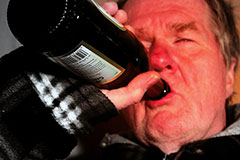Drinking and Driving - Why Is It Wrong? - Vol.400
In most countries, drinking and driving isn't only considered dangerous - it's illegal. Based on the measurable concentration of alcohol in the blood, some countries can convict drunk drivers even if they aren't actually involved in an accident. But why are the laws against drunk driving so harsh?

The Effects of Alcohol on Drivers
Alcohol decreases reaction time and impairs judgment. It can significantly affect your driving skills. Even if alcohol may initially have an uplifting effect, once you start driving, you can become a danger to others and especially yourself.
More specifically, alcohol reduces your reaction time while driving by 15 to 25%, according to a study conducted by the University of Texas at San Antonio. That may not seem like much, but on the road, and especially at high speeds, it can make a big difference.
It's not only reflexes that alcohol affects. The study also found that the visual acuity of drunk drivers decreases by almost one third.
An Example
Imagine two drivers nearing a crossing at around 40 kilometers per hour. A pedestrian appears on the crossing more or less suddenly. The sober driver sees him and pushes the break right away. The drunk driver needs more time to see the pedestrian and then takes a quarter of a second longer to push the break.
At that speed, the car needs at least 9 meters on a dry road and 13 meters on a wet road to stop. And that's not even factoring in the reaction distance. That's the distance the car makes in the space between the driver's realization of the danger and their reaction.
As any driver knows, seeing the road well and having a good reaction time can save lives. Not only that, but it also reduces the risk of small crashes and bumps. Even if these may not be dangerous, they can cost a driver money or their driving license.
Drunk Driving - The Legal Definition
In most countries, driving under the influence (DUI) of alcohol means having an alcohol concentration of 0.08% or higher and is illegal. For the average adult male, a 5% beer or a glass of 12% wine or a small sip of 80% liquor could be enough to impair their driving ability.
Women and men with a lower overall body mass are even more susceptible to the effects of alcohol. In other words, even a few low-alcohol beers drank over the course of a few hours can raise your blood alcohol concentration (BAC) beyond the safety limit.
Another thing to remember is that some countries have stricter BAC regulations than others. In China, having a 0.08% BAC or higher could mean up to three years imprisonment and a five-year license suspension.
By comparison, India has a 0.03% BAC while Vietnam and Thailand a 0.05% BAC. In Indonesia, Nepal, Brunei, and Afghanistan DUI is altogether banned and any concentration above 0.00% BAC could have dire consequences.
In the U.S. alone, 10,265 people died in 2015 as a result of crashes involving drunk drivers. Even when DUI doesn't kill, it can cause significant financial loss. The annual cost of DUI accidents is estimated at $44 billion.
Stay Sober. Drive Safe
As you can see, drinking and driving is a no-no around the world, and that for a simple reason - it can make even a great driver a poor one. There's no shortcut to avoiding it and no workaround. If you had a drink - even if just one - call a cab or ask a sober friend to give you a ride. It may not be the easiest thing to do, but it's the safest. In this way, you can keep drinking and driving for years to come, just not both at once.